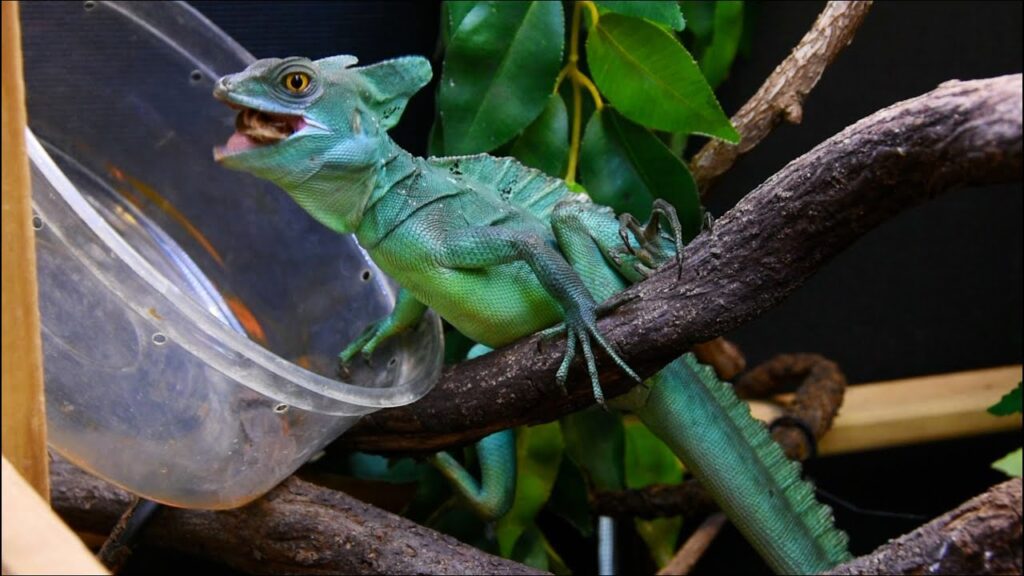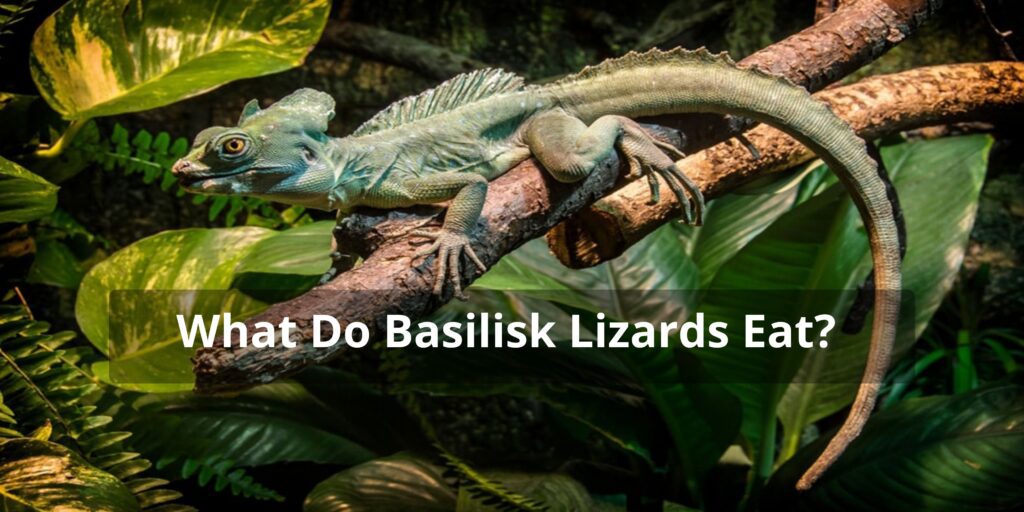Basilisk lizards, also known as Jesus Christ lizards due to their remarkable ability to run on water, are fascinating creatures that inhabit the rainforests of Central and South America. These reptiles belong to the family Corytophanidae and are known for their unique dietary preferences. In this article, we will delve into the intricacies of a basilisk lizard’s diet, exploring their preferred food sources, feeding habits, and important considerations to keep them healthy.
Insect vs Plant Food Ratio for Basilisk Lizards By Age
Before we dive into the specifics of what basilisk lizards eat, it is crucial to understand the insect-to-plant food ratio based on their age. Juvenile basilisk lizards have a higher demand for protein-rich insects to support their rapid growth and development. As they mature, their diet gradually shifts towards a greater proportion of plant matter, supplemented with occasional insects. This transition is essential to maintain their overall health and nutritional balance.
What do Basilisk Lizards Eat?
Live Food
In the wild, basilisk lizards primarily feed on live insects. Their diet includes a wide range of invertebrates such as crickets, grasshoppers, beetles, spiders, and various larvae. These small arthropods provide essential proteins and fats necessary for the lizards’ survival. Offering a variety of live food options ensures a diverse nutrient intake for your pet basilisk lizard.
Fruit
As basilisk lizards reach adulthood, they start incorporating a significant portion of plant-based foods into their diet. Fruits serve as an important source of vitamins, minerals, and fiber. Including fruits like berries, melons, and bananas in their diet will not only provide essential nutrients but also add variety to their meals. Remember to remove any seeds or pits that may be harmful to the lizards.
Vegetables
Leafy greens and vegetables play a crucial role in a basilisk lizard’s diet. Options such as kale, collard greens, mustard greens, and Swiss chard offer valuable vitamins and minerals. Additionally, including vegetables like squash, zucchini, and bell peppers can provide dietary diversity. It is important to ensure that the vegetables are appropriately-sized and easily digestible for your lizard.
Vitamins & Minerals
Supplementation of essential vitamins and minerals is vital to maintain optimal health for basilisk lizards. Calcium and vitamin D3 are particularly important, as they contribute to proper bone development and prevent metabolic bone diseases. Dusting the live food or incorporating calcium and vitamin supplements into their diet can fulfill these requirements.
What Can’t They Eat?
While basilisk lizards have a relatively broad diet, there are some foods to avoid offering them. Toxic plants, such as those from the nightshade family (e.g., tomatoes, potatoes, eggplant) or onions, should never be fed to basilisk lizards. These foods contain substances that can be harmful or even fatal to them. Additionally, it is crucial to refrain from feeding them insects captured from pesticide-treated areas, as the toxins can negatively impact their health.
How Often Should I Feed My Basilisk Lizard?
Establishing a regular feeding schedule is crucial for the well-being of your basilisk lizard. Juveniles require daily feedings, as they have high energy demands for growth. As they mature, feeding them every other day or three times a week is usually sufficient. Pay attention to their behavior and body condition to adjust the frequency accordingly. Remember that overfeeding can lead to obesity, while underfeeding can result in malnutrition.
Rules and Tips for Feeding Your Basilisk Lizard

- Ensure that all live insects are appropriately sized and safe for consumption.
- Offer a variety of insect species to provide a balanced diet.
- Provide a shallow dish of water large enough for your basilisk lizard to soak in, as they will drink and absorb water through their skin.
- Dust live food with appropriate calcium and vitamin supplements before offering them to your lizard.
- Keep the feeding area clean to prevent the growth of harmful bacteria.
How about Water?
Basilisk lizards require access to clean freshwater at all times. Apart from drinking, they will also use water to regulate their body temperature and aid in shedding their skin. Ensure that the water is changed regularly to maintain cleanliness and prevent the growth of bacteria or parasites.
FAQs About What Do Basilisk Lizards Eat
Can basilisk lizards survive on a diet solely consisting of plants?
No, basilisk lizards require animal protein and insects as their primary source of nutrition. While they may occasionally consume small vertebrates, plant matter alone does not fulfill their dietary needs.
Are basilisk lizards strictly piscivores (fish eaters)?
Despite living near water bodies, basilisk lizards primarily feed on insects. Piscivory is not their main feeding behavior, although they may consume small fish occasionally.
Do basilisk lizards have any specific feeding rituals?
Basilisk lizards do not exhibit elaborate feeding rituals. They rely on their speed, agility, and excellent vision to swiftly capture and devour their prey.
Are there any unique adaptations that aid basilisk lizards in capturing prey?
Basilisk lizards possess long toes with fringed scales, which increase the surface area of their feet and aid in their water-running ability. This adaptation enables them to chase and capture insects that may land on the surface of water.
How frequently do basilisk lizards feed?
Basilisk lizards have high metabolisms and require regular meals to sustain their energy levels. They typically feed daily, consuming a quantity of insects proportional to their body size.
Conclusion
Understanding what basilisk lizards eat is essential for providing them with a well-balanced diet in captivity. As they grow, their dietary preferences shift from primarily insect-based to a larger proportion of plant matter. Offering a variety of live insects, fruits, and vegetables ensures that they receive the necessary nutrients for their overall health. Remember to supplement their diet with appropriate vitamins and minerals, maintain a regular feeding schedule, and provide access to clean freshwater. By following these guidelines, you can help ensure the well-being and longevity of your basilisk lizard.



